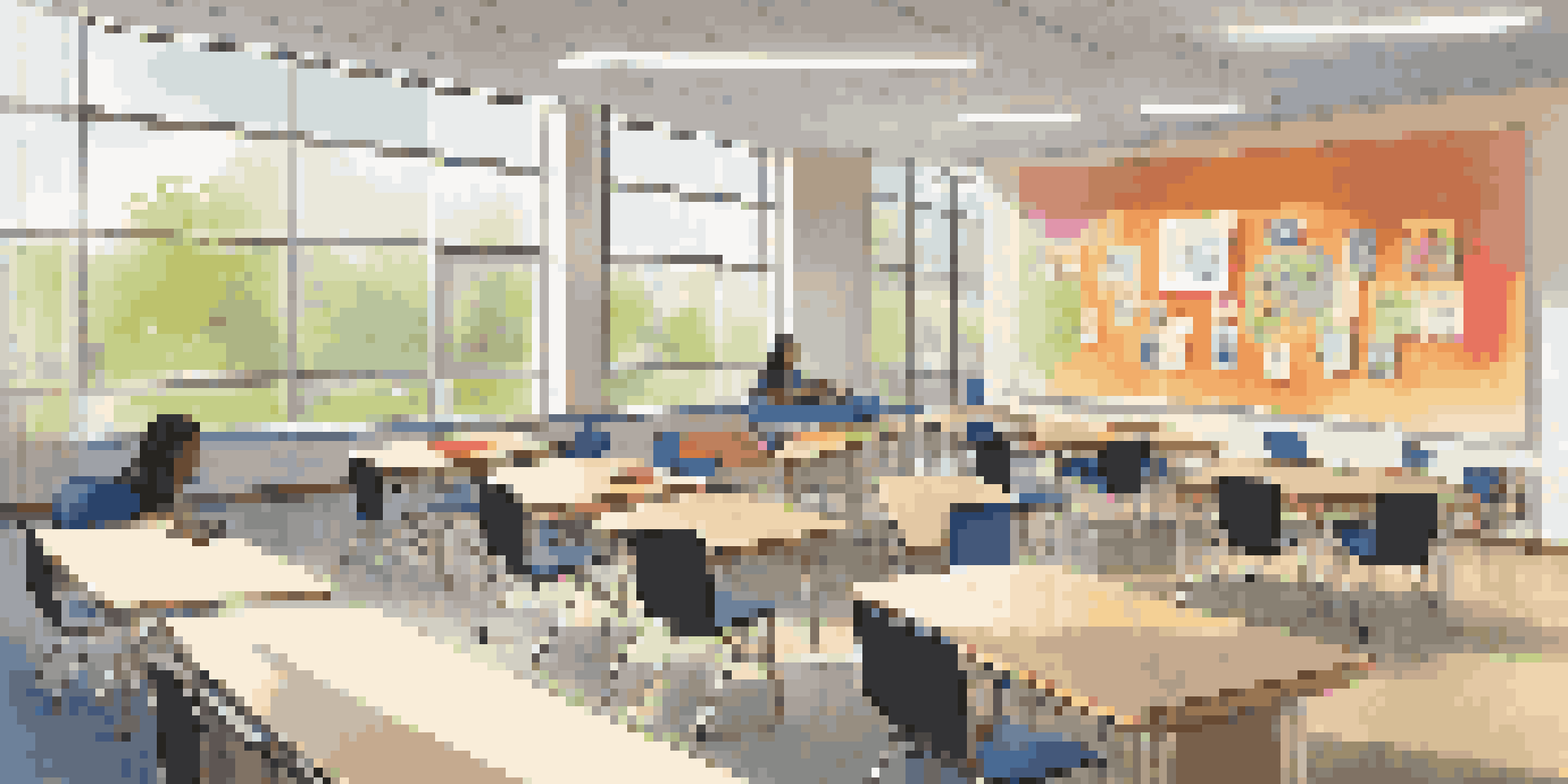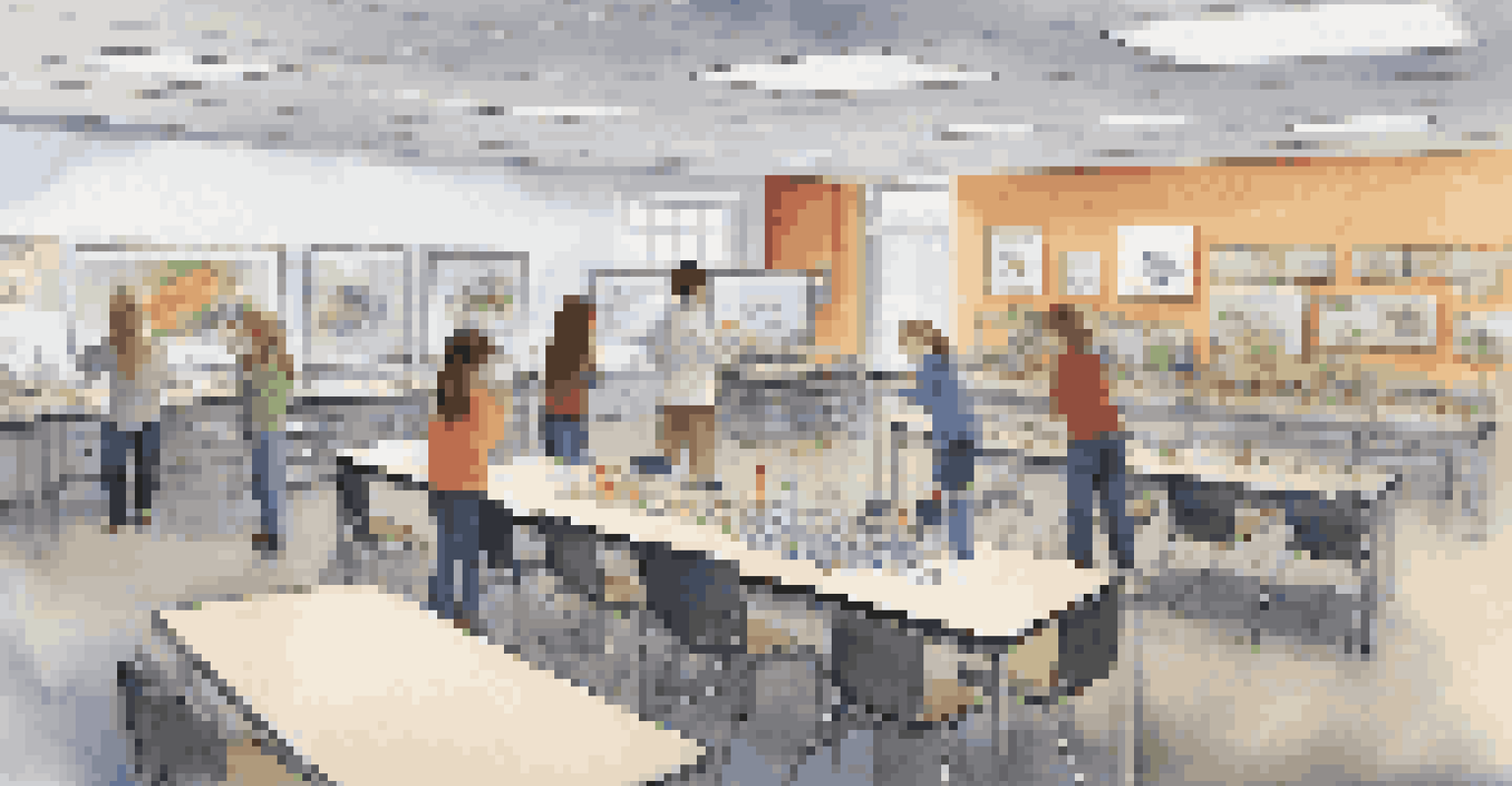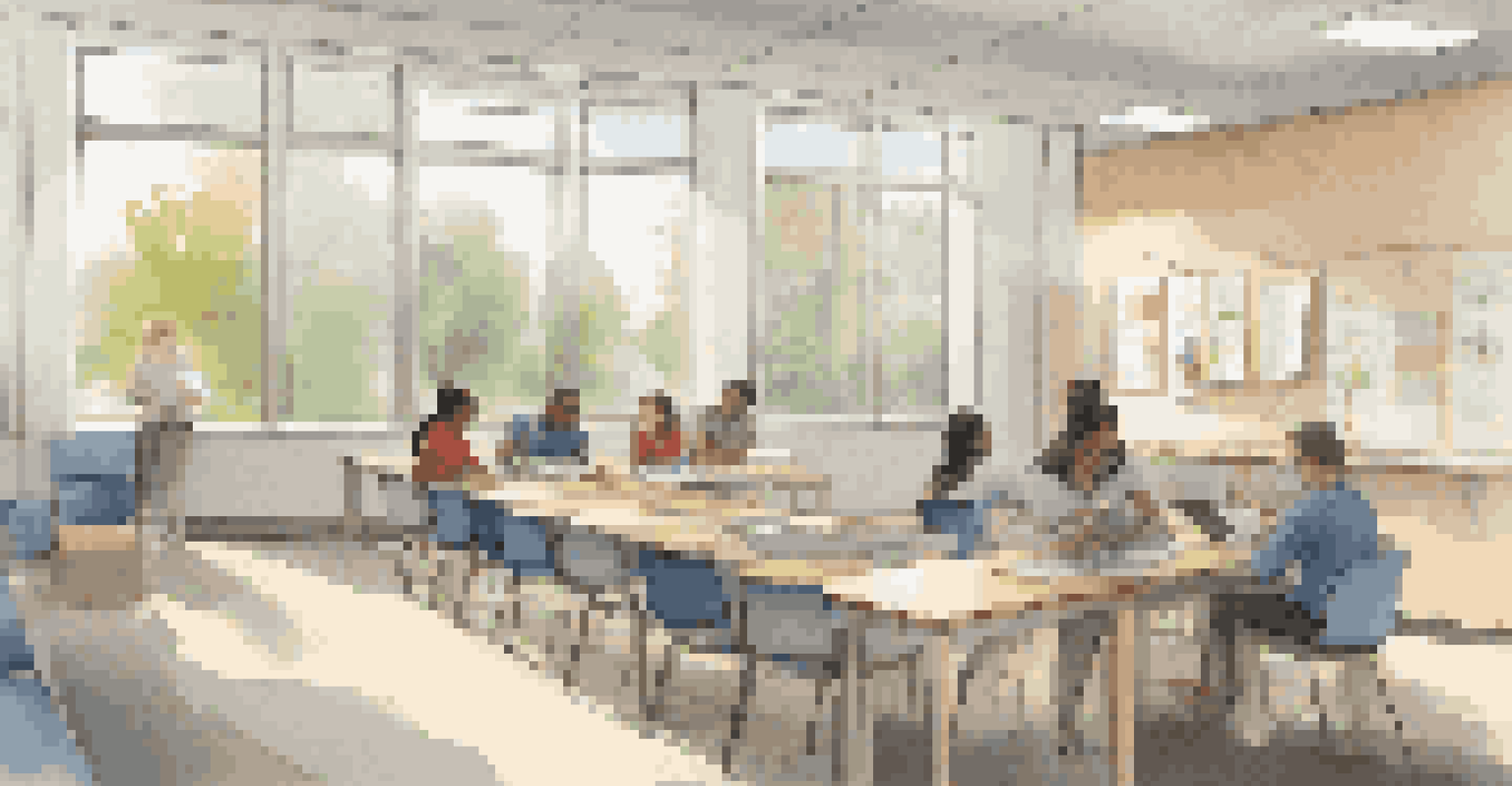Designing Learning Environments for Critical Thinking

Understanding Critical Thinking in Learning Spaces
Critical thinking is the ability to analyze, evaluate, and create new ideas. In learning environments, it encourages students to question assumptions and explore diverse perspectives. By fostering critical thinking, we equip learners with essential skills for problem-solving and decision-making.
The important thing is not to stop questioning. Curiosity has its own reason for existing.
Incorporating critical thinking into educational settings starts with understanding its components: analysis, evaluation, and inference. These elements help students navigate complex information and develop reasoned arguments. A space designed with these components in mind can transform traditional learning into an interactive experience.
For instance, consider a classroom that encourages debate and discussion. Such an environment not only engages students but also allows them to practice their critical thinking skills in real-time. This foundational understanding sets the stage for creating effective learning environments.
Creating Collaborative Learning Spaces
Collaboration is a key ingredient in fostering critical thinking. When students work together, they share diverse viewpoints and challenge each other's ideas. This interaction not only enhances learning but also develops social skills essential for teamwork in the real world.

Designing collaborative spaces can be as simple as rearranging furniture to facilitate group work. Circular tables or movable seating can encourage discussions and brainstorming sessions. By promoting collaboration, we create an atmosphere where critical thinking can flourish through peer interaction.
Foster Critical Thinking Skills
Encouraging critical thinking equips students with essential problem-solving and decision-making abilities.
For example, project-based learning activities, where students tackle real-world problems in groups, can lead to deeper understanding and innovative solutions. These experiences enable students to think critically while working towards a common goal, making learning both relevant and impactful.
Integrating Technology for Enhanced Learning
Technology plays a vital role in modern education, and when integrated thoughtfully, it can enhance critical thinking. Tools like online forums, interactive simulations, and multimedia resources provide students with varied platforms to explore ideas. This access to diverse resources encourages deeper analysis and creativity.
Education is not the learning of facts, but the training of the mind to think.
For instance, using virtual labs allows students to conduct experiments that may not be feasible in a traditional classroom. These digital tools can foster inquiry-based learning, where students ask questions, predict outcomes, and analyze results. Such experiences promote critical thinking through hands-on involvement.
Moreover, technology can facilitate global collaboration, connecting students with peers worldwide. This exposure to different cultures and viewpoints broadens their horizons and encourages critical discourse. Embracing technology in learning environments can significantly enhance critical thinking capabilities.
Physical Environment: Layout and Design Matters
The physical layout of a learning environment significantly impacts student engagement and critical thinking. A well-designed space can promote interaction, creativity, and focus. Elements such as natural light, comfortable seating, and flexible arrangements can transform how students learn and collaborate.
For example, classrooms with open spaces and designated areas for group work encourage movement and interaction. This flexibility can inspire students to express their thoughts freely and engage in discussions. A thoughtfully designed environment nurtures a sense of belonging and motivation.
Collaborative Learning Enhances Growth
Collaborative spaces allow students to share diverse viewpoints, enhancing their critical thinking through peer interactions.
Additionally, incorporating visual aids and resource-rich areas can stimulate curiosity. Displaying student work, thought-provoking questions, or relevant materials can spur critical thinking. Thus, the physical environment shapes the learning experience and facilitates deeper understanding.
Encouraging Inquiry-Based Learning Approaches
Inquiry-based learning promotes curiosity and critical thinking by encouraging students to ask questions and seek answers. This approach fosters a sense of ownership over learning, as students explore topics that interest them. Teachers serve as facilitators, guiding students as they navigate their inquiries.
For instance, rather than simply presenting facts, educators can pose open-ended questions that invite exploration. This method encourages learners to research, analyze, and synthesize information, leading to meaningful insights. Inquiry-based learning engages students in active problem-solving.
Moreover, this approach can be tailored to various subjects, making it versatile. Whether in science, humanities, or mathematics, inquiry-based learning can be adapted to stimulate critical thinking across disciplines. Ultimately, it transforms students into active participants in their education.
The Role of Feedback in Developing Critical Thinking
Feedback is essential for cultivating critical thinking skills. Constructive feedback helps students understand their strengths and areas for improvement. By providing specific, actionable suggestions, educators can guide students in refining their thought processes and arguments.
Encouraging peer feedback can also enhance critical thinking. When students review each other's work, they engage in analytical thinking, evaluating different perspectives. This collaborative feedback loop fosters a culture of continuous improvement and critical engagement.
Feedback Drives Improvement
Constructive feedback helps students refine their thought processes and deepen their critical thinking skills.
For example, integrating peer review sessions into the curriculum can provide valuable insights. Students learn to articulate their thoughts while considering others' viewpoints, deepening their understanding. Feedback becomes a powerful tool for fostering a critical mindset in learners.
Assessing Critical Thinking in Learning Environments
Assessing critical thinking can be challenging but is crucial for understanding student progress. Traditional tests often fail to capture students' analytical abilities. Developing assessments that require application, synthesis, and evaluation of knowledge provides a more accurate measure of critical thinking skills.
For example, project-based assessments, presentations, or reflective essays can reveal how well students analyze information and construct arguments. These methods encourage learners to demonstrate their critical thinking in authentic ways. This shift in assessment allows educators to better understand and support student growth.

Additionally, incorporating self-assessment encourages students to reflect on their learning processes. By evaluating their own critical thinking skills, students become more aware of their strengths and areas for improvement. This self-awareness is vital for continuous development and lifelong learning.